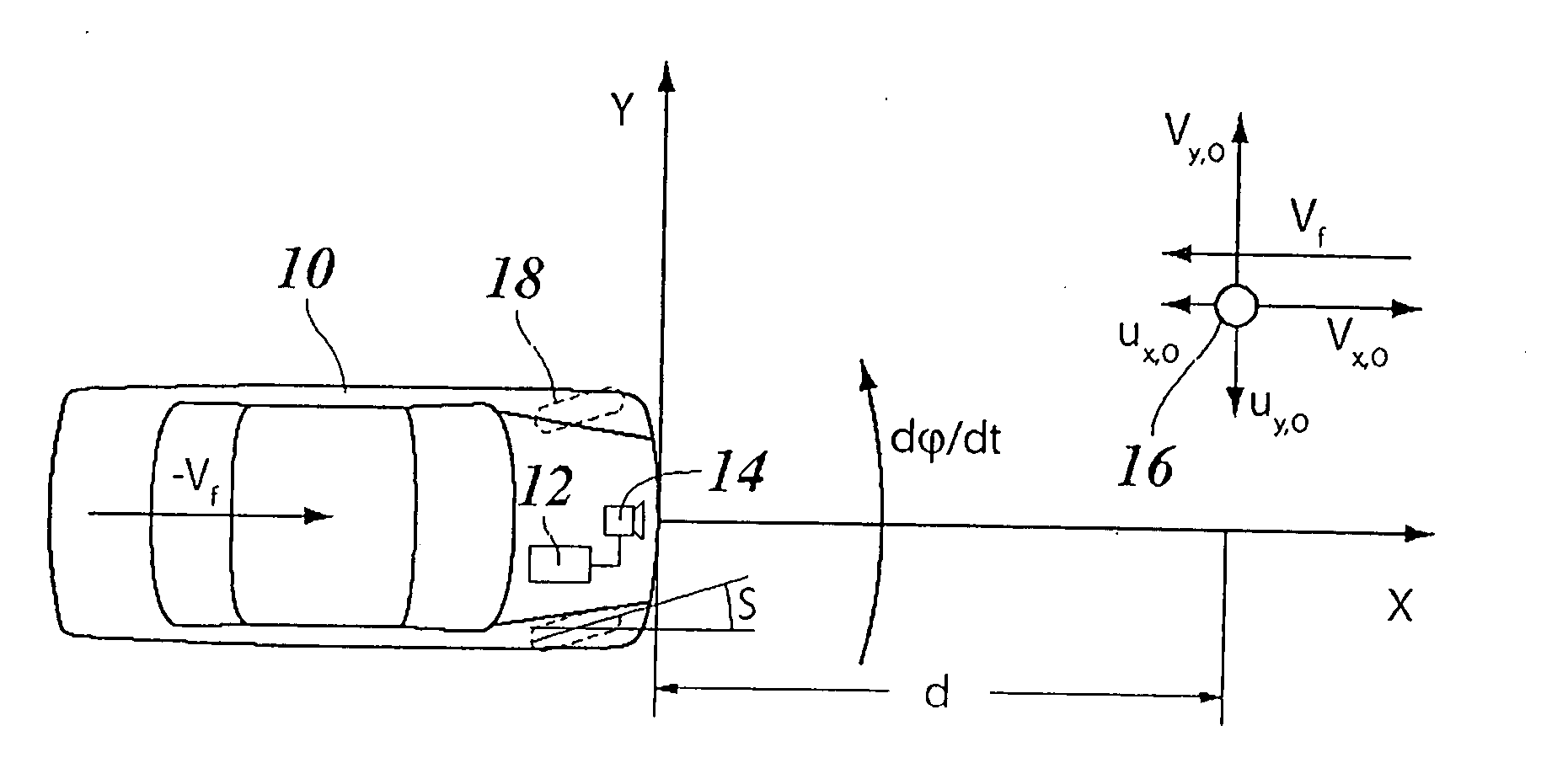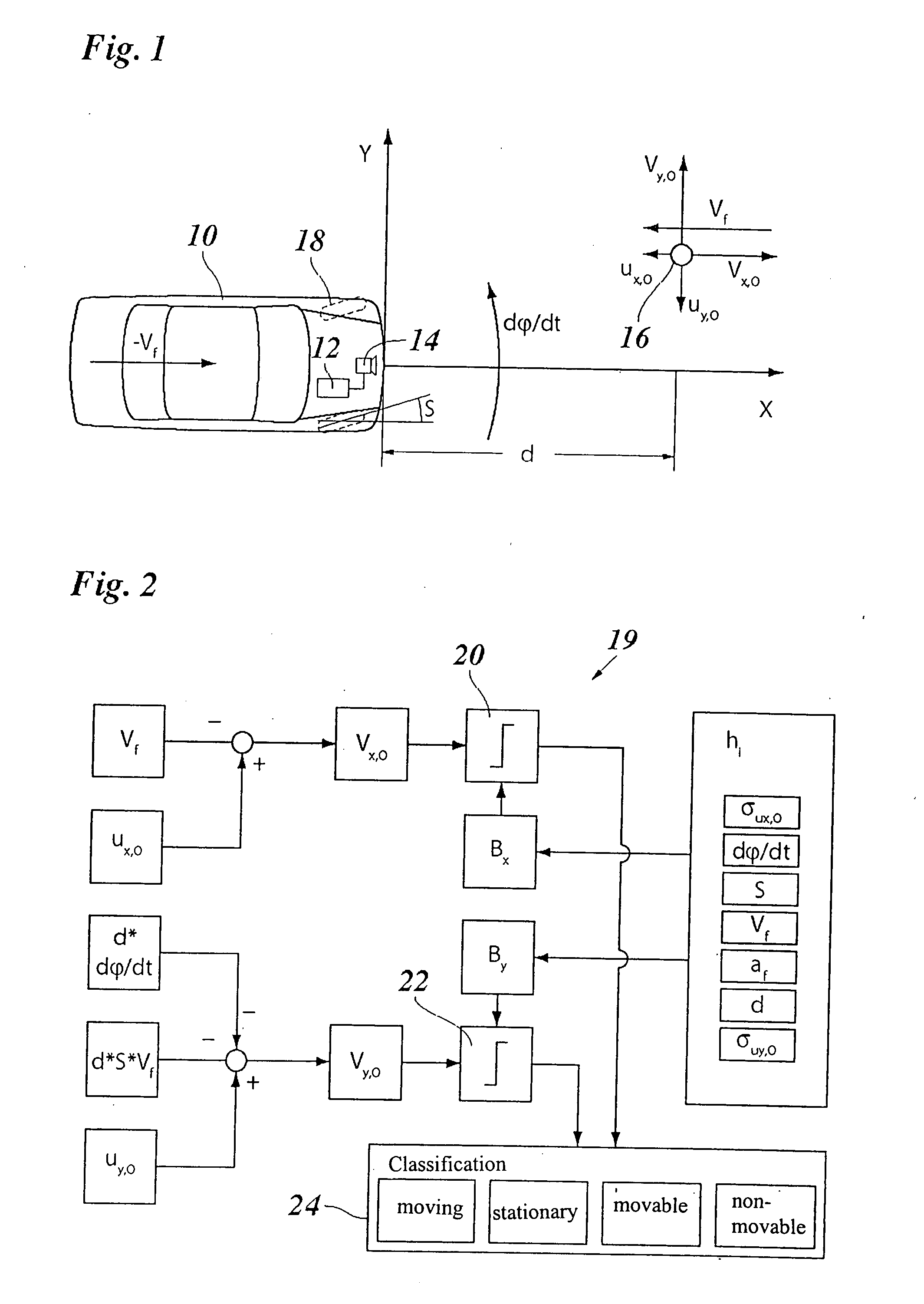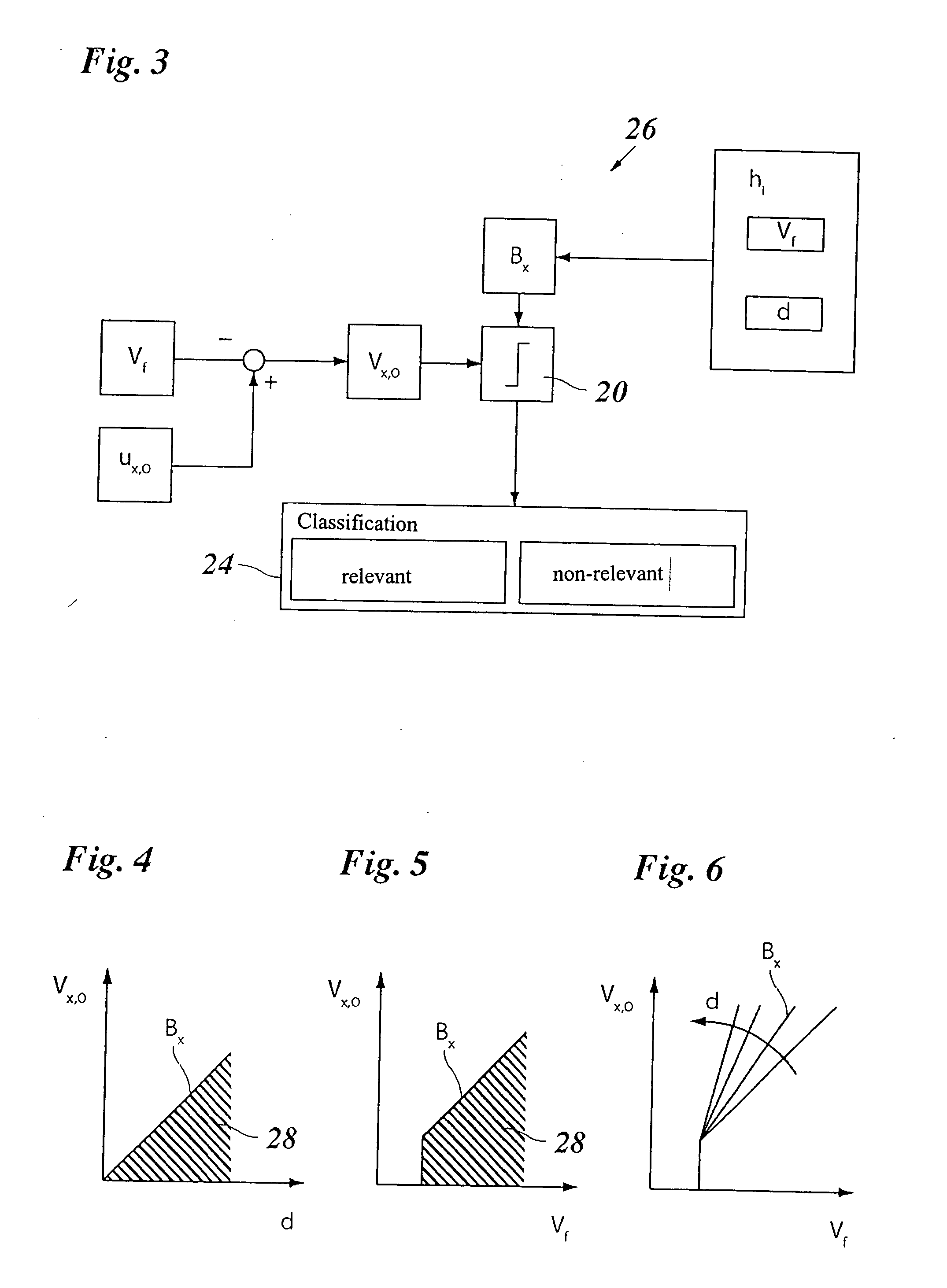Driver assistance system having a device for recognizing stationary objects
- Summary
- Abstract
- Description
- Claims
- Application Information
AI Technical Summary
Benefits of technology
Problems solved by technology
Method used
Image
Examples
Embodiment Construction
[0028]FIG. 1 depicts a vehicle 10 that is equipped with a driver assistance system 12, for example an ACC system. A radar sensor 14 is built in as a localization system. In the example shown, a single object 16, whose distance d in direction X (travel direction of vehicle 10) and relative velocity ux,O in the X direction can be measured directly, is located in the localization region of the radar sensor. Radar sensor 12 has a certain angular resolution capability and can therefore also measure the azimuth angle at which object 16 is being viewed with respect to the X axis. From this, the transverse position of the object in the direction of the Y axis can be calculated with the aid of the measured distance d, and the relative velocity uy,O in the Y direction can be calculated by time derivation.
[0029]Appearing below object 16 in FIG. 1 is a vector Vf that indicates the “inherent velocity” of vehicle 10. More precisely, this vector indicates the apparent relative velocity that would ...
PUM
 Login to View More
Login to View More Abstract
Description
Claims
Application Information
 Login to View More
Login to View More - R&D
- Intellectual Property
- Life Sciences
- Materials
- Tech Scout
- Unparalleled Data Quality
- Higher Quality Content
- 60% Fewer Hallucinations
Browse by: Latest US Patents, China's latest patents, Technical Efficacy Thesaurus, Application Domain, Technology Topic, Popular Technical Reports.
© 2025 PatSnap. All rights reserved.Legal|Privacy policy|Modern Slavery Act Transparency Statement|Sitemap|About US| Contact US: help@patsnap.com



